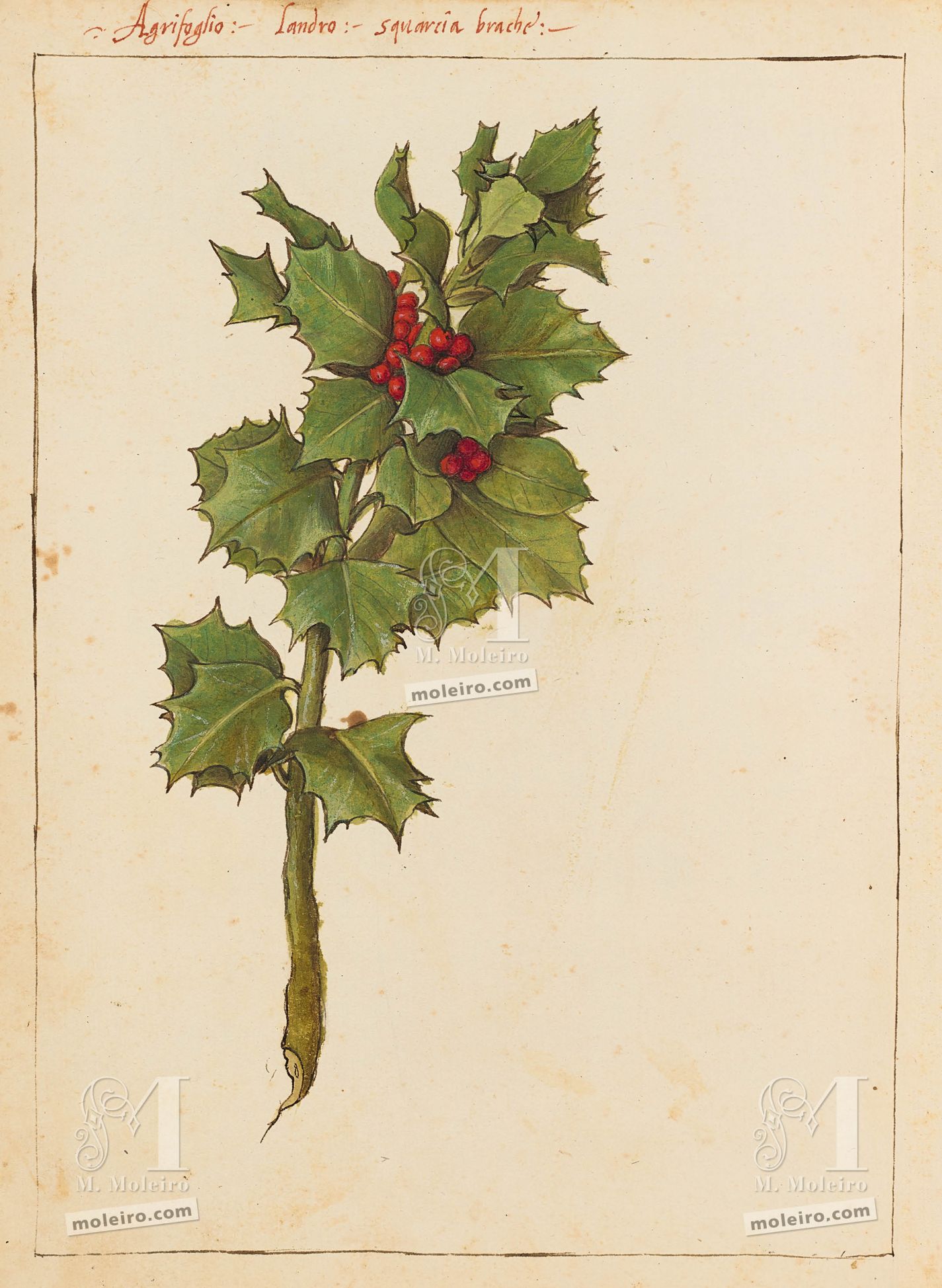This plant grows in forests throughout Italy, France, Spain (but is rare in the south), Great Britain, much of Europe and the Mediterranean region as far as southwestern Asia. Its generic name means holm oak in Latin and its specific name refers to its spiky leaves, from
acus (needle) and
folium (leaf). The leaves lower down on this tree, which grows up to 8 metres tall, have spikes but those higher up out of reach of herbivores are smooth. Livestock, and cattle in particular, are very fond of these leaves. Its red berries are toxic and grow on the female trees of this dioecious plant. It contains glycosides, tannins and bitters. Its cooked leaves are good for rheumatism and fever. The quality of its wood is very good. The inside of its bark is boiled, allowed to ferment and then pounded to make birdlime, a viscid matter used to hunt birds, amongst other things. It is an ornamental tree traditionally used as a Christmas decoration for its beautiful shiny leaves and red berries, but is now a protected species. Dioscorides apparently did not mention holly in his treatise, although Laguna says that the chapter on Paliurus might refer to this plant.
Ramón Morales Valverde
Real Jardín Botánico de Madrid
(Extract from the commentary volume of Mattioli's Dioscorides illustrated by Cibo)
